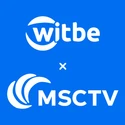- QA test automation
- Automated testing and monitoring
- Industry News
Testing Amazon’s New Fire TV Stick 4K Select with Vega OS
By Witbe
Amazon has introduced a major change to its Fire TV ecosystem with the launch of the Fire TV Stick 4K Select, powered by the new Vega OS. Unlike previous Fire TV devices running Android-based Fire OS, Vega OS is built directly on Linux, giving Amazon full control over its platform and reducing dependence on Android TV.
Amazon introduces Vega OS: A Linux-based shift for Fire TV
For years, Amazon’s Fire TV lineup used Android as its foundation, customized through Fire OS. With Vega OS, Amazon now moves to an in-house Linux-based system. The Fire TV Stick 4K Select is the first device to ship with this new OS.
From an app perspective, this introduces a hybrid execution model:
- Native apps: compiled or ported to Vega OS and executed locally.
- Streamed apps: when an app is not yet available on Vega OS, the device runs it in the cloud and displays the interface locally.
This ensures compatibility with existing services, although streamed apps may take slightly longer to start.
Benchmarking Vega OS vs Fire OS: performance and availability
To evaluate the impact of Vega OS, we compared two devices under identical conditions:
- Fire TV Stick 4K 2nd Gen (Fire OS, Android-based)
- Fire TV Stick 4K Select (Vega OS, Linux-based)
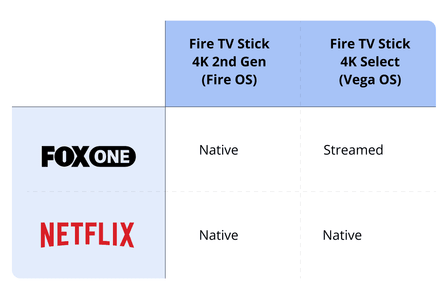
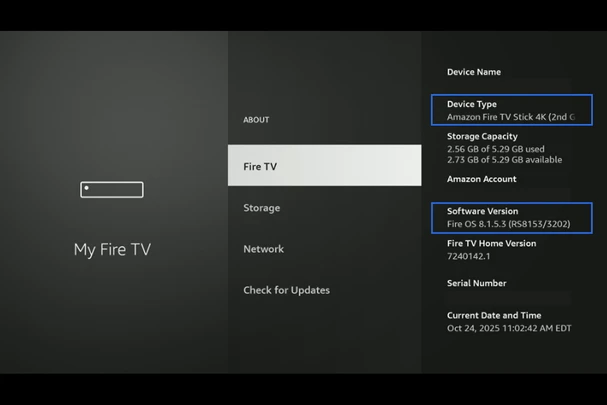
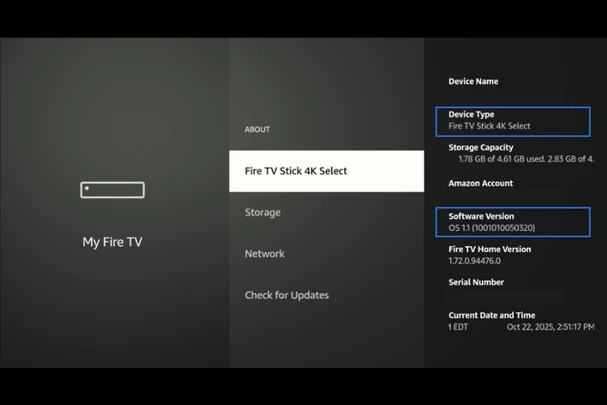
Tests covered both native and streamed app scenarios. For example, Netflix was tested natively on both devices, while Fox One was native on Fire OS and streamed on Vega OS.
The type of content tested on both apps is SVoD/ Replay.
Benchmark Results Between Fire TV Stick 4K (2nd gen) and Fire TV Stick 4K Select

Key observations from app launch and video start time tests:
- Availability: Both systems performed perfectly in availability tests.
- App launch time: The cloud streamed app on Vega OS (Fox One in our example) took about 8 seconds longer than the native app to open (12s vs 4s). The video below is a good way to see how it affects the user with a progress bar transition.
- Video start time: Unlike app launch time, on Vega OS we did not measure any significant difference between native and cloud-streamed apps. This makes sense: while the the UI is rendered in the cloud, the player itself (responsible for retrieving chunks, decoding and applying DRM) still operates locally on the device. Considering the technical complexity, the level of efficiency is commendable.
- Playback stability: Consistent once the stream began, regardless of OS.
Overall, the new Fire TV Select with the new Vega OS is not faster than the two-year-old Fire TV Stick 4K.
Vega OS performs reliably, with only some latency for streamed apps due to their cloud-based UI rendering process.
Testing and automation implications of Vega OS
The move to Vega OS introduces new challenges and opportunities for test automation and video quality monitoring.
Because Vega OS combines native and streamed app execution, both modes must be covered in QA workflows.
How Witbe enables automated testing on Vega OS Devices
With Witbe’s automated testing technology, teams can already perform end-to-end monitoring and analysis on Fire TV devices running Vega OS.
Testing is done on real hardware, with the Witbox Bluetooth remote control (BTLE), measuring what the viewer actually sees on screen. Witbox and Fire TV are both configured in 4k / 2160p.
KPIs and real-device measurements for Vega OS testing
Witbe’s technology captures essential performance metrics such as:
- App launch time
- Video start time
- Video and audio playback quality
- Consistency of QoE across native and streamed app modes
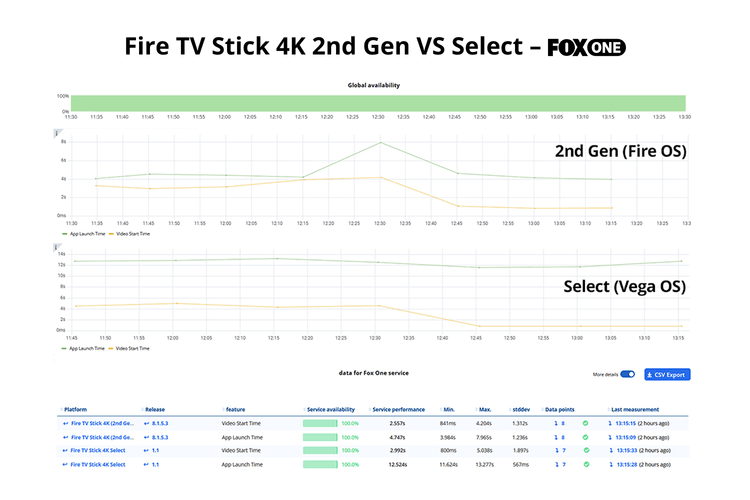
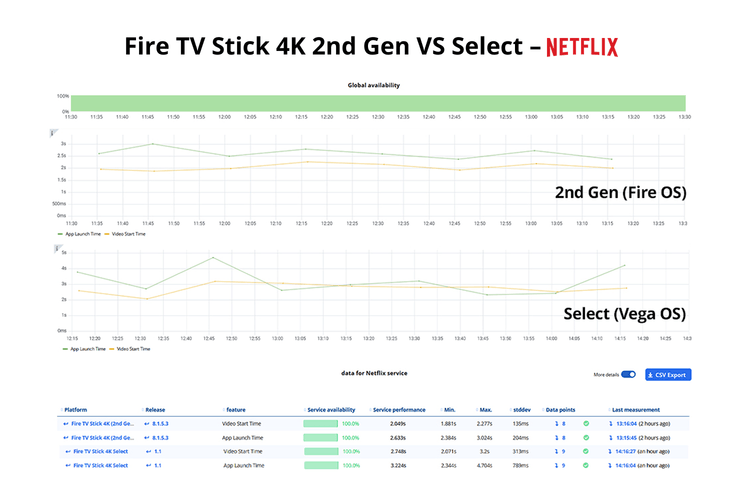
By supporting both local and cloud-rendered apps, Witbe allows QA engineers to validate user experience on Vega OS devices with the same accuracy and depth as on other platforms including Android TV, Apple TV, and Roku.
Amazon’s Strategy: Moving toward platform independence
Vega OS is not necessarily faster or more powerful than Fire OS, but it represents a key step in Amazon’s long-term strategy.
By building its own Linux-based operating system, Amazon gains control over software updates, app management, and integrations across its Fire TV lineup.
For developers, the transition means supporting a new platform. For QA and monitoring professionals, it means adapting test automation frameworks to ensure complete coverage of native and streamed apps.
Key Takeaways for testing Fire TV devices on Vega OS
System change: Vega OS (Linux-based) replaces the Android-fork Fire OS.
Availability: App compatibility is maintained through a mix of native and streamed execution.
Performance: Native apps match Fire OS results; streamed apps show latency during launch.
Testing: Real-device automation is essential for accurate QoE measurement. Witbe already supports testing on Vega OS Fire TV devices.
Strategic impact: Amazon secures control over its OS while QA teams adapt testing strategies to cover this new environment.


